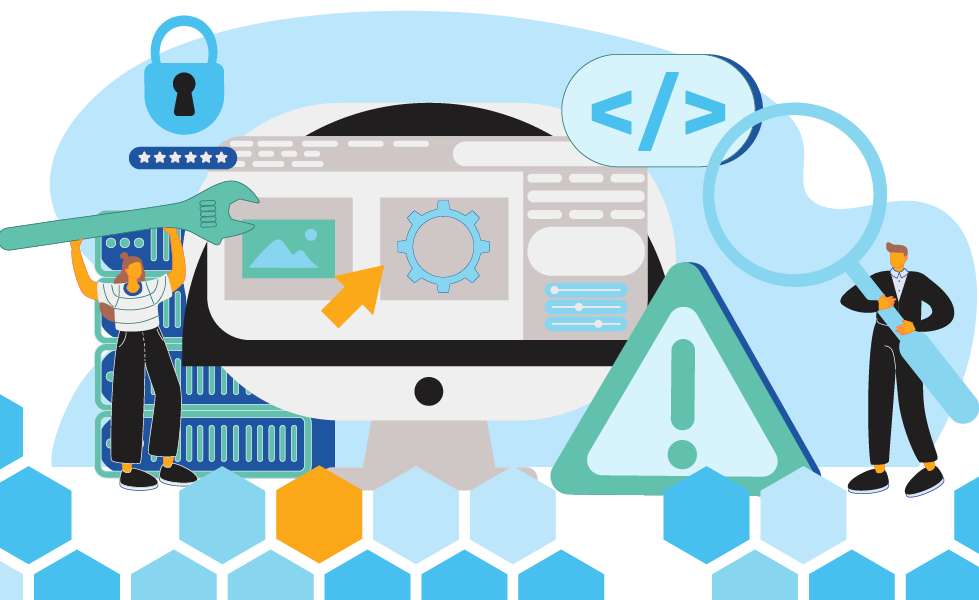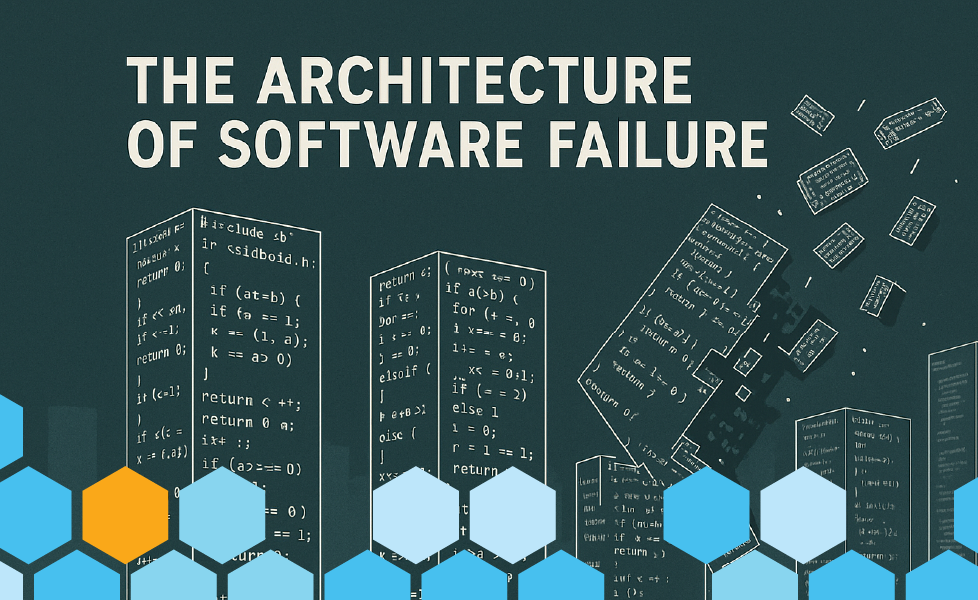The Final Exam
Despite decades of progress in software development, system testing remains the field’s most fragile, manual, and unsolved challenge. Now what?
TABLE OF CONTENTS
Why Software Testing's Biggest Challenge Remains Unsolved (Part I)
Note: I wrote this blog post with the help of AI (Anthropic’s Claude). For fun, it follows The Economist's style. If you notice a few British English spellings, now you know why.
For decades, software engineers have faced a peculiar paradox. The more thoroughly they tested individual components of their code, the more confident they became—yet the more likely their software was to fail spectacularly when real users got their hands on it. This is the curse of system testing: essential for quality, but traditionally so cumbersome and unreliable that many firms simply gave up trying to do it properly.
The irony is rich. In an industry obsessed with automation and efficiency, the most critical form of testing remains stubbornly manual, expensive, and fragile. While unit tests run in milliseconds and integration tests complete in minutes, comprehensive system testing can take days—assuming it works at all.
The Problem with Playing God
System testing occupies a unique position in the software development hierarchy. Unlike unit testing, which examines code fragments in laboratory conditions, or integration testing, which checks whether different modules can shake hands politely, system testing attempts something far more ambitious: it tries to predict how software will behave when unleashed upon the chaos of the real world.
This is rather like the difference between testing a Formula One car's engine on a dyno and racing it at Monaco. Both are necessary, but only one tells you whether the car will actually cross the finish line.
System testing is the process of validating a complete, integrated software system to verify that it meets specified requirements and functions correctly in its intended environment. It exercises complete user workflows from start to finish, ensuring that business processes work as intended across all system boundaries. Unlike its more focused cousins, system testing evaluates functionality from the user's viewpoint, focusing on whether the system delivers the expected business value rather than technical implementation details.
For years, the software industry has been obsessed with the "test pyramid"—a model that emphasises lots of unit tests, fewer integration tests, and minimal system testing. This made sense when computing resources were scarce and system tests took days to run. But it also meant that software that passed all its tests often crumbled at first contact with users.
The result has been a generation of beautifully engineered software that works perfectly in theory and poorly in practice. As one veteran engineer puts it: "We became very good at testing code, but terrible at testing products."
The Brittle Brigade
Traditional system testing suffers from five chronic ailments, each more debilitating than the last. Together, they form what might be called the "brittle brigade"—a collection of problems that have plagued software development for decades.
The Brittleness Problem
Conventional automated tests are written like legal contracts—obsessively specific about every detail. Change a button's colour from blue to green, move a form field slightly, or update a label, and dozens of tests break, even though the software still works perfectly for users. This brittleness stems from tests being tightly coupled to specific UI elements, requiring constant maintenance as applications evolve.
The cost of maintaining these fragile tests often exceeds their value. Teams spend more time fixing broken tests than fixing actual bugs. Many eventually abandon system test automation altogether, falling back on manual testing that is even slower and more error-prone. It is a devil's bargain: automation that requires more human intervention than doing the work manually.
The Discovery Problem
Creating comprehensive system tests requires mapping every possible user journey through an application—a task that grows exponentially with complexity. A modest e-commerce site might have thousands of distinct workflows: browsing products, adding items to a cart, applying discounts, checking out with different payment methods, handling shipping options, and managing returns. Documenting them all manually is like trying to chart every hiking trail in the Alps using only a pair of boots and a notebook.
This discovery process is not merely time-intensive but fundamentally incomplete. Human testers, no matter how experienced, will miss critical workflows or edge cases. Different testers prioritize different scenarios, leading to gaps in coverage. Once created, test suites rarely adapt to evolving user behavior patterns, becoming increasingly stale over time.
The Environment Problem
System tests need realistic conditions to be meaningful: proper data volumes, network delays, server loads, and integration points that mirror production. Setting this up is expensive and time-consuming. Keeping it synchronised with production systems is harder still.
Most test environments are elaborate theatrical sets—convincing from a distance, but obviously fake up close. They suffer from environment drift, gradually diverging from production characteristics. Using production data raises privacy and compliance concerns, while synthetic data often lacks the complexity and edge cases found in real user data. Scale mismatches mean test environments cannot replicate production performance characteristics, limiting the relevance of test results.
The Speed Problem
System tests are inherently slow because they exercise complete workflows through real interfaces. Unlike unit tests that run in isolated memory, system tests must navigate web pages, submit forms, wait for database operations, and process API calls. A comprehensive test suite can take days or weeks to complete, turning rapid development cycles into Ultraman marathons.
Sequential dependencies prevent parallelisation—many tests must run in specific orders or require clean starting states. Infrastructure costs mount quickly when running comprehensive system tests, requiring significant computing resources. The result is delayed feedback loops that make it difficult for developers to efficiently address issues when they are discovered.
The Diagnosis Dilemma
When system tests fail, determining why requires detective work worthy of Hercule Poirot. Was it a genuine bug, an environmental hiccup, test brittleness, or a timing issue? A single underlying problem can cause multiple test failures, making it challenging to identify the actual root cause.
Traditional tools provide insufficient context about system state during test execution. Debugging test failures often requires significant manual effort from skilled engineers who must reproduce issues, examine logs, and trace through complex system interactions. False positives from environmental issues or test brittleness erode confidence in the entire testing process.
The Vicious Cycle
These problems create a self-reinforcing downward spiral. System testing is too painful to do well, so firms do it poorly, which makes it seem less valuable, which justifies doing even less of it. Teams that set ambitious system testing goals often scale back their efforts as maintenance costs mount and reliability decreases.
The irony is that the more complex and critical software becomes, the more essential comprehensive system testing becomes—yet also the more difficult traditional approaches make it. Banking applications, healthcare systems, and e-commerce platforms all require robust system testing, but their complexity makes traditional testing approaches prohibitively expensive and unreliable.
Meanwhile, user expectations continue to rise. In an age when a single bad experience can generate thousands of negative reviews within hours, software quality is not merely a technical concern but a business imperative. Yet the tools and approaches for ensuring quality at the system level remain stubbornly primitive.
The Mounting Stakes
The urgency of solving these problems has never been greater. Software is not merely eating the world—it is digesting every industry within it. From banking to agriculture, competitive advantage increasingly depends on delivering reliable digital experiences. Firms that can ensure software quality will outmanoeuvre those that cannot.
But there is another dimension to this challenge that most observers miss. As artificial intelligence agents become common users of software systems, the nature of system testing itself must evolve. Human users are predictable in their unpredictability—they make mistakes in familiar ways. AI agents may interact with systems in patterns no human would consider, discovering edge cases that traditional testing never contemplated.
The question is no longer whether these problems can be solved, but whether they can be solved quickly enough to keep pace with the growing complexity and importance of software systems.
Coming in Part II
How artificial intelligence is systematically dismantling each of these traditional challenges, transforming system testing from liability to competitive advantage. We will explore the AI techniques revolutionising test discovery, execution, and analysis—and why this quiet revolution may be the most crucial development in software quality assurance in decades. Read it here.
About the Author
 Testaify founder and COO Rafael E. Santos is a Stevie Award winner whose decades-long career includes strategic technology and product leadership roles. Rafael's goal for Testaify is to deliver comprehensive testing through Testaify's AI-first platform, which will change testing forever. Before Testaify, Rafael held executive positions at organizations like Ultimate Software and Trimble eBuilder.
Testaify founder and COO Rafael E. Santos is a Stevie Award winner whose decades-long career includes strategic technology and product leadership roles. Rafael's goal for Testaify is to deliver comprehensive testing through Testaify's AI-first platform, which will change testing forever. Before Testaify, Rafael held executive positions at organizations like Ultimate Software and Trimble eBuilder.
Take the Next Step
Testaify is in managed roll-out. Request more information to see when you can bring Testaify into your testing process.




